
Keywords: Genetic control
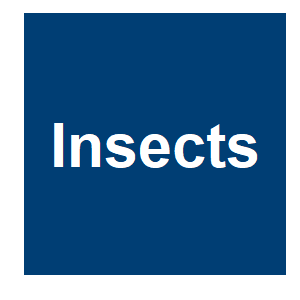
|
Wolbachia Infection through Hybridization to Enhance an Incompatible Insect Technique-Based Suppression of Aedes albopictus in Eastern SpainCholvi, M.; Trelis, M.; Bueno-Marí, R.; Khoubbane, M.; Gil, R.; Marcilla, A.; Moretti, R., Insects, 15:206. 2024.
The emergence of insecticide resistance in arbovirus vectors is putting the focus on the development of new strategies for control. In this regard, the exploitation of Wolbachia endosymbionts is receiving increasing attention due to its demonstrated effectiveness in reducing the ... Keywords: androgenesis, chromosome, common carp, cyprinus-carpio, feminization, fish, Genetic control, genetic manipulation, gonadal development, gynogenesis, sex-ratio, strategy, supermale common carp, Trojan Y, XY physiological female common carp, YY |

|
Wolbachia Infection through Hybridization to Enhance an Incompatible Insect Technique-Based Suppression of Aedes albopictus in Eastern SpainCholvi M, Trelis M, Bueno-Marí R, Khoubbane M, Gil R, Marcilla A, Moretti R., Insects, 15. 2024.
Wolbachia bacteria occur naturally as symbionts of many insect species and are responsible for various phenomena that modify the hosts’ reproductive biology. Among them, cytoplasmic incompatibility (CI) refers to the sterility of eggs produced by crosses between infected males ... Keywords: androgenesis, chromosome, common carp, cyprinus-carpio, feminization, fish, Genetic control, genetic manipulation, gonadal development, gynogenesis, sex-ratio, strategy, supermale common carp, Trojan Y, XY physiological female common carp, YY |

|
Genome editing in pests: basic science to applicationsChen, X., Palli, S.R., Journal of Pest Science, 2024.
Recent developments in sequencing technologies produced enormous data on gene sequences and the identity of genes in many pest insects and disease vectors. However, the function of many of these genes is unknown. Functional genomics studies to uncover gene function in pest ... Keywords: androgenesis, chromosome, common carp, cyprinus-carpio, feminization, fish, Genetic control, genetic manipulation, gonadal development, gynogenesis, sex-ratio, strategy, supermale common carp, Trojan Y, XY physiological female common carp, YY |

|
Upper Bound on the Mutational Burden Imposed by a CRISPR-Cas9 Gene-Drive ElementMichael S. Overton, Sean E. Guy, Xingsen Chen, Alena Martsul, Krypton Carolino, Omar S. Akbari, Justin R. Meyer, Sergey Kryazhimskiy, bioRxiv, 2023.
CRISPR-Cas9 gene drives (CCGDs) are powerful tools for genetic control of wild populations, useful for eradication of disease vectors, conservation of endangered species and other applications. However, Cas9 alone and in a complex with gRNA can cause double-stranded DNA breaks at ... Keywords: androgenesis, chromosome, common carp, cyprinus-carpio, feminization, fish, Genetic control, genetic manipulation, gonadal development, gynogenesis, sex-ratio, strategy, supermale common carp, Trojan Y, XY physiological female common carp, YY |

|
Modifying mosquitoes to suppress disease transmission: Is the long wait over?J. R. Powell, Genetics, 2022.
For more than 50 years it has been a dream of medical entomologists and public health workers to control diseases like malaria and dengue fever by modifying, through genetics and other methods, the arthropods that transmit them to humans. A brief synopsis of the history of ... Keywords: androgenesis, chromosome, common carp, cyprinus-carpio, feminization, fish, Genetic control, genetic manipulation, gonadal development, gynogenesis, sex-ratio, strategy, supermale common carp, Trojan Y, XY physiological female common carp, YY |

|
The Complex Lives of Mosquitoes: The Key for Malaria ControlF. Okumu, ISGlobal, 2021.
Mosquitoes spread diseases to millions of people around the world, yet they remain poorly understood by most. Studying their biology and behaviours can help us combat, and eventually eliminate, dangerous diseases such as malaria and dengue fever.There are nearly 3,500 species of ... Keywords: androgenesis, chromosome, common carp, cyprinus-carpio, feminization, fish, Genetic control, genetic manipulation, gonadal development, gynogenesis, sex-ratio, strategy, supermale common carp, Trojan Y, XY physiological female common carp, YY |

|
Using Moderate Transgene Expression to Improve the Genetic Sexing System of the Australian Sheep Blow Fly Lucilia cuprinaY. Yan, M. E. Williamson and M. J. Scott, Insects, 11. 2021.
The sterile insect technique (SIT) is a promising strategy to control the Australian sheep blow fly Lucilia cuprina, a major pest of sheep. We have previously developed a transgenic embryonic sexing system (TESS) for this pest to facilitate the potential SIT application. TESS ... Keywords: androgenesis, chromosome, common carp, cyprinus-carpio, feminization, fish, Genetic control, genetic manipulation, gonadal development, gynogenesis, sex-ratio, strategy, supermale common carp, Trojan Y, XY physiological female common carp, YY |
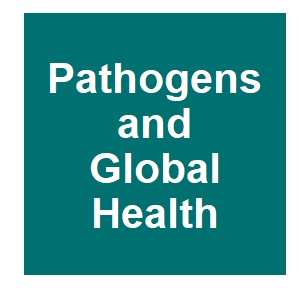
|
Cellular mechanisms regulating synthetic sex ratio distortion in the Anopheles gambiae germlineR. E. Haghighat-Khah, A. Sharma, M. R. Wunderlich, G. Morselli, L. A. Marston, C. Bamikole, A. Hall, N. Kranjc, C. Taxiarchi, I. Sharakhov and R. Galizi, Pathogens and Global Health, 114:370-378. 2020.
Meiotic cleavage of rDNA repeats, located in the sex chromosomes of A. gambiae SD males, affects the competitiveness of mature sperm to fertilize the female oocyte. Keywords: androgenesis, chromosome, common carp, cyprinus-carpio, feminization, fish, Genetic control, genetic manipulation, gonadal development, gynogenesis, sex-ratio, strategy, supermale common carp, Trojan Y, XY physiological female common carp, YY |

|
A spatially discrete, integral projection model and its application to invasive carpR. A. Erickson, E. A. Eager, P. M. Kocovsky, D. C. Glover, J. L. Kallis and K. R. Long, Ecological Modelling, 387:163-171. 2018.
Natural resource managers and ecologists often desire an understanding of spatial dynamics such as migration, dispersion, and meta-population dynamics. Network-node models can capture these salient features. Additionally, the state-variable used with many species may be ... Keywords: androgenesis, chromosome, common carp, cyprinus-carpio, feminization, fish, Genetic control, genetic manipulation, gonadal development, gynogenesis, sex-ratio, strategy, supermale common carp, Trojan Y, XY physiological female common carp, YY |
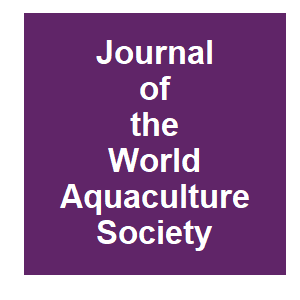
|
Production of YY Supermale and XY Physiological Female Common Carp for Potential Eradication of this Invasive SpeciesM. Y. Jiang, X. X. Wu, K. X. Chen, H. R. Luo, W. Yu, S. T. Jia, Y. M. Li, Y. F. Wang, P. H. Yang, Z. Y. Zhu and W. Hu, Journal of the World Aquaculture Society, 49:315-327. 2018.
The common carp, Cyprinus carpio, is the third most cultivated freshwater species worldwide, but is also considered an invasive species. The Trojan Y chromosome strategy is one of the most promising methods to eradicate this invasive species. However, obtaining fertile YY ... Keywords: androgenesis, chromosome, common carp, cyprinus-carpio, feminization, fish, Genetic control, genetic manipulation, gonadal development, gynogenesis, sex-ratio, strategy, supermale common carp, Trojan Y, XY physiological female common carp, YY |

|
The optimal implementation of the Trojan Y chromosome eradication strategy of invasive speciesM. R. Kelly and X. Y. Wang, Journal of Biological Systems, 25:399-418. 2017.
Invasive aquatic species continue to be a persistent problem around the world. The Trojan Y Chromosome (TYC) eradication strategy has recently been developed to help fight the problem in aquatic systems by targeting only the invasive species, sparing native marine stock. It ... Keywords: androgenesis, chromosome, common carp, cyprinus-carpio, feminization, fish, Genetic control, genetic manipulation, gonadal development, gynogenesis, sex-ratio, strategy, supermale common carp, Trojan Y, XY physiological female common carp, YY |
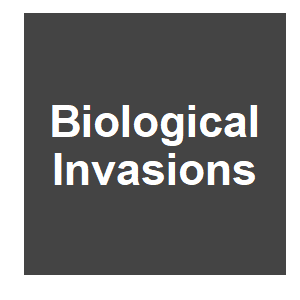
|
Towards the genetic control of invasive speciesHarvey-Samuel, TA, T.; Alphey, L., Biological Invasions, 19:1683-1703. 2017.
Invasive species remain one of the greatest threats to global biodiversity. Their control would be enhanced through the development of more effective and sustainable pest management strategies. Recently, a novel form of genetic pest management (GPM) has been developed in which ... Keywords: androgenesis, chromosome, common carp, cyprinus-carpio, feminization, fish, Genetic control, genetic manipulation, gonadal development, gynogenesis, sex-ratio, strategy, supermale common carp, Trojan Y, XY physiological female common carp, YY |

|
Regulatory experience and challenges for the release of GM insectsBeech, C, Journal Fur Verbraucherschutz Und Lebensmittelsicherheit-Journal of Consumer Protection and Food Safety, 9:S71-S76. 2014.
Genetically modified (GM) insects are a potentially valuable new tool for the biological control of insect pests of humans, animals and plants. Considerable progress has been made recently in transfer of GM insects from the laboratory to release and evaluation in the environment. ... Keywords: androgenesis, chromosome, common carp, cyprinus-carpio, feminization, fish, Genetic control, genetic manipulation, gonadal development, gynogenesis, sex-ratio, strategy, supermale common carp, Trojan Y, XY physiological female common carp, YY |

|
Demographic effects on the use of genetic options for the control of mosquitofish, Gambusia holbrookiR. E. Thresher, M. Canning and N. J. Bax, Ecological Applications, 23:801-814. 2013.
This study tests the sensitivity of genetically based pest control options based on sex ratio distortion to intra-and intersexual aggressive interactions that affect male and female survival and fitness. Data on these interactions and their impacts were gathered for the ... Keywords: androgenesis, chromosome, common carp, cyprinus-carpio, feminization, fish, Genetic control, genetic manipulation, gonadal development, gynogenesis, sex-ratio, strategy, supermale common carp, Trojan Y, XY physiological female common carp, YY |
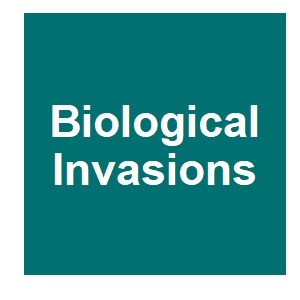
|
Genetic control of invasive fish: technological options and its role in integrated pest managementR. E. Thresher, K. Hayes, N. J. Bax, J. Teem, T. J. Benfey and F. Gould, Biological Invasions, 16:1201-1216. 2013.
Genetic options for the control of invasive fishes were recently reviewed and synthesized at a 2010 international symposium, held in Minneapolis/St. Paul, MN, USA. The only option currently available "off-the-shelf'' is triploidy, which can be used to produce sterile males for a ... Keywords: androgenesis, chromosome, common carp, cyprinus-carpio, feminization, fish, Genetic control, genetic manipulation, gonadal development, gynogenesis, sex-ratio, strategy, supermale common carp, Trojan Y, XY physiological female common carp, YY |

|
Genetic control of invasive plants species using selfish genetic elementsK. A. Hodgins, L. Rieseberg and S. P. Otto, Evolutionary Applications, 2:555-569. 2009.
Invasive plants cause substantial environmental damage and economic loss. Here, we explore the possibility that a selfish genetic element found in plants called cytoplasmic male sterility (CMS) could be exploited for weed control. We developed an analytical model and a spatial ... Keywords: androgenesis, chromosome, common carp, cyprinus-carpio, feminization, fish, Genetic control, genetic manipulation, gonadal development, gynogenesis, sex-ratio, strategy, supermale common carp, Trojan Y, XY physiological female common carp, YY |

Contact
David O’Brochta
Foundation for the
National Institutes of Health
geneconvenevi@fnih.org
RSS

